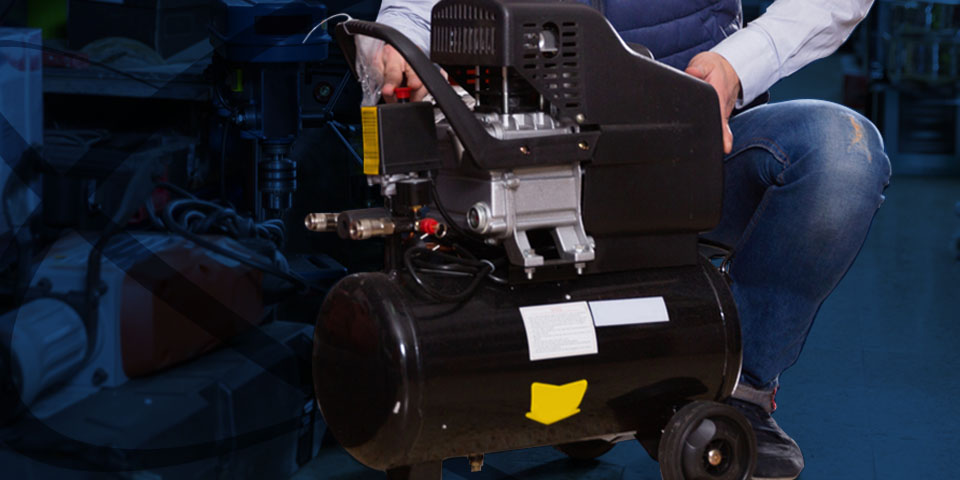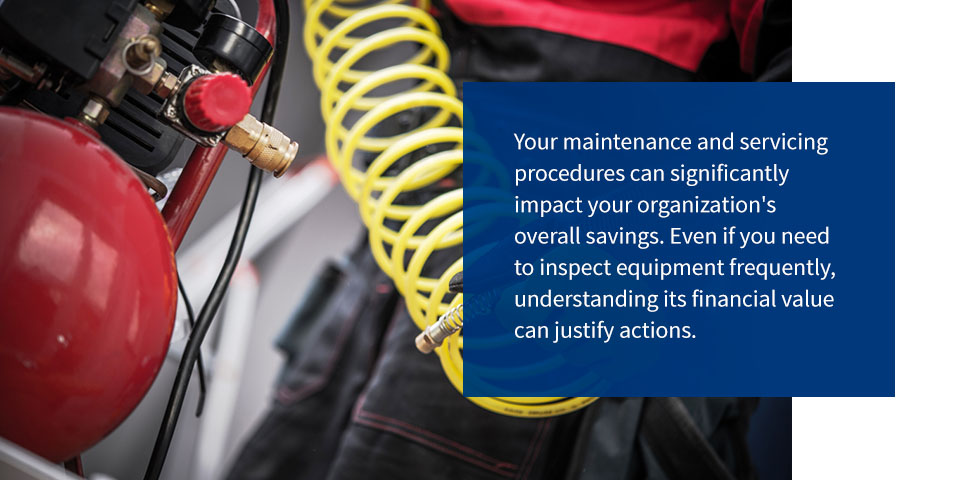
Oil-free air compressors are powerful equipment leveraged in several industries. A comprehensive maintenance system is essential when you want to protect your investment and processes.
Servicing and Maintaining Air Compressors
Oil-free air compressors are excellent air compressor models because they prevent oil from getting into the compressor components and therefore disrupting operations. However, they still require servicing and inspecting to ensure parts and processes work as they should. Regular maintenance is necessary for optimizing your oil-free compressor life expectancy.
Understanding how to repair oil-less air compressors and what to check can streamline your maintenance processes.
1. Check the Air Compressor Safety Valve
To assess your safety valve’s functionality, run your air compressor until it reaches the shut-off pressure. At this point, pull out the valve ring. This action will produce three reactions that require different responses, including:
- The valve closes automatically and releases pressure: If you get this reaction, your safety valve is operating regularly. You can move on to your next test and mark that the component is functioning.
- The valve fails to close: If it doesn’t return to its original position after pulling it out, it is time to replace it. You will need to shut down this air compressor and mark that it is out of operation until repairs are complete.
- The valve fails to release pressure: Along with closing automatically, the safety valve must release tank pressure. If the pressure remains after pulling it out, that is another indicator that the safety valve needs replacing. When inspecting your safety valve, you might get one failure or both.
When completing this test, you should always wear the proper safety equipment to protect yourself.
2. Drain the Air Compressor Tank
Vapor and condensation build up in tanks because of the moisture found in the air. To ensure air compressor and component functionality, you need to drain the tank frequently and regularly to prevent too much buildup.
You can complete this task on your maintenance checklist by locating the drain underneath the tank. Use another container for the contents to drain into for a more streamlined maintenance process.
3. Assess the Air Filter Quality
The filter’s condition will determine its air quality. The air compressor’s filter prevents contamination from passing through processes, making it an integral component. You should check the air filter depending on your operations and scale.
Note that air filters fail quality tests if they show signs of dirt, buildup, wear or other damage. These factors make it harder for the filter to work correctly, requiring you to make them for repair or replacement.
Air filters can come in several materials, including paper, felt and foam. The paper and felt options are consumables and need replacing if they do not pass quality tests. Alternatively, you can wash foam air filters and replace them in your equipment once they are thoroughly dry.
4. Look at the Condition of the Power Lead
During your regular maintenance, inspect the power cord’s quality. Fraying or other damages can create an unsafe operating environment for equipment and employees. If you notice wear, shut down the equipment and contact an electrician to start the repair process.
5. Visually Inspect the Air Compressor
Like the power cord and air filter, you can assess many industrial oil-free air compressor components by simply looking at them, making maintenance procedures straightforward and efficient. Some parts you should check when inspecting your air compressor include the following:
- Hoses
- Valves
- Seals
- Bolts, nuts and joints
With these components, look for signs of damage and wear, such as cracks. Some fittings might need tightening, while other parts will require replacing. Additionally, review the air tank for any holes or rust. You must replace the tank if you notice any wear or damage. You cannot repair this component.
Consider Costs and Maintenance Frequency
Repairing and replacing parts can become costly, especially when some components wear quickly. Running tests might take away from essential operations. Finding the balance for maintenance frequency is vital to creating a cost-effective solution.
However, regular maintenance and servicing can also save businesses money and reduce several costs, including:
- Reducing downtime: When you can better ensure equipment functionality and quality, you can prevent extended downtimes that hurt operations and overall efficiency. Regular maintenance catches problems early, resulting in less extensive repairs that take less time to complete. Quality and operational components and systems mean you can enhance optimal performance.
- Preventing costly repairs: More comprehensive maintenance costs more than fixing smaller parts. Additionally, replacements might be more expensive than repairing existing systems. Regular maintenance allows you to identify wear and damage at smaller levels before they affect other components and systems. Even one component underperforming or working with damage can hurt other parts in the air compressor.
- Improving energy efficiency: Operating more efficiently can reduce your energy bill. Equipment functioning with damaged or worn parts might overcompensate and use more energy than it needs to meet the same specifications. Maintenance and servicing can identify overproduction before the air compressor uses large amounts of energy.
Your maintenance and servicing procedures can significantly impact your organization’s overall savings. Even if you need to inspect equipment frequently, understanding its financial value can justify actions.
Oil-Less Air Compressor Maintenance and Servicing Tips
Using the right strategies and tips when implementing your maintenance and servicing systems ensures you get the most from your preventative and protective efforts. Some practices to consider integrating into your routines include:
- Developing a proper lockdown procedure: When an air compressor fails a test or inspection, you need a way to communicate to other employees that it is inoperable until fixed. Lockdown procedures prevent equipment from starting up. Applying locks to startup processes and components prevents employees from powering on air compressors, while bright tags indicate they should not use them.
- Acting at regular intervals: As you establish your maintenance habits, you must determine how often you will carry out procedures. Some tests and checks might need higher frequencies, like daily or regular intervals, while others can wait for a more comprehensive annual review. Each air compressor has unique schedules depending on its make, model and age. Finding a schedule that works for your organization and equipment will better optimize your efforts.
- Keeping maintenance and servicing records: You can identify potential problems sooner by tracking equipment repairs and replacements. Charting actions taken allows the next inspector to ensure problems have not returned or replacements work well. It can also highlight when equipment costs offset its performance and might be time to invest in a newer model.
You can optimize your efforts for increased value and results when you have robust maintenance and servicing strategies.
Streamline Maintenance With a Service Plan From Quincy Compressor
At Quincy Compressor, we value reliability, efficiency and productivity. When maintenance and servicing are essential for improving performance and equipment life span, partnering with the right organizations helps streamline the repairs and replacement processes.
Quincy Compressor offers several service plans, allowing your company to meet your needs with quality maintenance and repair opportunities. With these plans, you can receive excellent care from trained experts who know what to inspect and provide top-grade solutions.
Contact Quincy Compressor today and discover how we can preserve your oil-free air compressor quality.



